Can we really make a change towards a healthy church?
For the last few weeks we’ve been looking at church trauma and how the church has gone off track. I wanted to end 2023 with the lats podcast of the year looking at how we can actually be a force for good, and togther help the church pivot towards something healthy.
Laura Barringer and Scot McKnight (a father-daughter team) join me to talk about their new book Pivot!
Or, as always, you can watch on YouTube:
Timeline of the Podcast
0:10 Announcements and How You Can Donate and Get a Tax Receipt
4:10 Scot & Laura join to talk ‘Pivot’ and ‘Tov’
8:00 Shift vs Change vs Transform
13:00 Examples of churches that went through this
18:30 Complications of big Christian personalities
24:45 Churches helping real people
30:05 Forming a coalition
37:45 The real transformative gospel
45:30 Sometimes it works, sometimes it doesn’t
53:20 Hope for the future & future projects
What does it mean to Pivot?
Scot McKnight and Laura Barringer wrote an amazing book in A Church Called Tov about what goodness in church is supposed to look like. But then the inevitable happened: People started asking, “but how do we get there? What do we actually DO?”
That’s where their new book Pivot comes in! It shows how change happens at church, and then it also shows how you can be part of that change, even if you’re not in leadership. What do you do if you’re in a toxic church but you love the poeple there and have a heart to see it change? They show you the steps you can take–but also when to know if you’ve done enough.
It’s set up so you can walk through it with friends and is immensely practical, and I just loved it!
I think the book goes great with my Great Sex Rescue Toolkit, too, of resources that you can use when you want to talk to those in leadership about things that they are teaching that aren’t quite right. That’s super inexpensive (you can pay what you want) and is a great tool to aid in pivoting the church!
You can be part of our work in pivoting the church.
I also introduced our new fundraising capability. We’re a new initiative under the Bosko Foundation, called Good Fruit Faith. Bosko wanted to team with us to do something important: help influence the church to learn about our data and healthy relationships, and then start teaching it.
Up until now we’ve been focused on helping individuals change, and we’ve done very, very well at that. But we’d like to see change at an institutional level, with more pastors and counselors getting on board so this toxic stuff isn’t taught in the first place. We want to create continuing education for pastors and counselors; get more of our research into peer reviewed journals; and so much more. If pastors are taught differently from the outset, then churches won’t be as toxic.
Will you join us in this? This is tax receiptable in the United States as applicable to U.S. law (we’re working on making similar connections in Canada and elsewhere, but right now it’s just in the United States). We would love to raise $28,000 by the end of the year, which will help us make a good start at our scholarship program and getting our materials together to do some courses.
Please join us, and let’s make change!
Things Mentioned in the Podcast
-
Partner with us at Good Fruit Faith, an initiative of the Bosko Foundation, as we help impact future church leaders with our data and our message (tax receiptable within the U.S.):
-
Join our Patreon for as little as $5 a month and get access to unfiltered podcasts!
-
Find Scot McKnight and Laura Barringer’s book Pivot, along with their first book together A Church Called Tov
-
Our first podcast together about their book A Church Called Tov
-
Find Scot McKnight’s New Testament bible study series
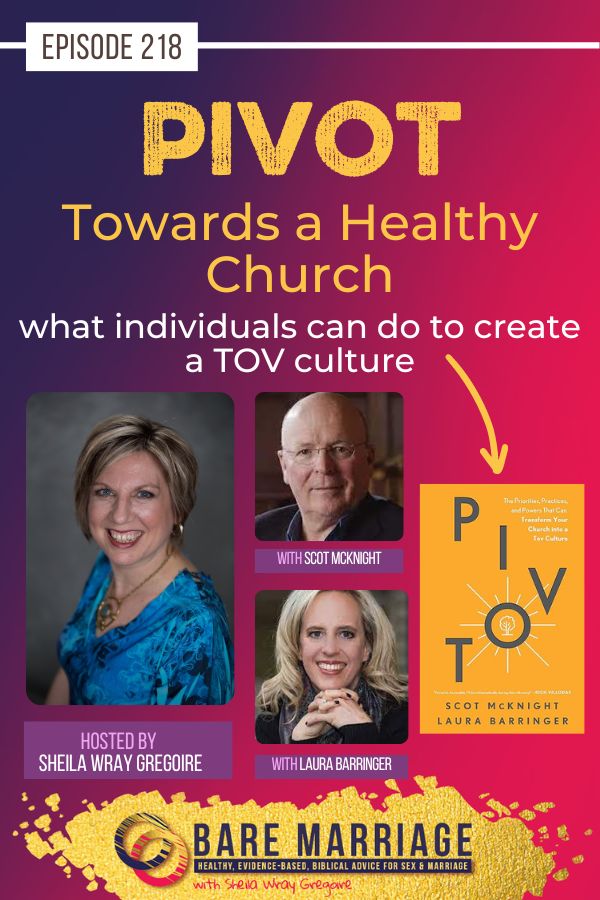
What do you think? Have you seen change happen at the local church level? Let’s talk in the comments!
Transcript
Sheila: I am so happy to bring back on the podcast a father/daughter duo, who have written another book together. We have Dr. Scot McKnight, who is a professor of—is it New Testament? I forget. A professor of—
Scot: New Testament. My 41st year as a professor.
Sheila: Awesome. At Northern Seminary. And his daughter, Laura Barringer, who is a teacher and a friend of mine. And I am so glad to have you guys back. Thank you for being here.
Laura: Thanks for having us.
Scot: Yes. Thank you, Sheila. I always say that I am a teacher too.
Sheila: Yes. Yes.
Scott: Laura says, “I’m just a,”—she says of herself, “I’m just a teacher.” And I say, “I’m a teacher too.”
Sheila: And I see in the background Scot has a two of his most recent books or two of the books that we’re going to be talking about. A Church Called Tov. And you were on our podcast probably two years ago when that book was first out talking about that. And your new book, Pivot, which I have here as well. The Priorities, Practices, and Powers that can Transform Your Church into a Tov Culture. And on the last few episodes of the Bare Marriage podcast, we have been talking about how traumatic church can be and how problematic. So much of—especially evangelical culture is right now. And so we are here to have you fix it. So we’re excited. You’re going to help fix it for us.
Scot: If people would just listen.
Sheila: Yes. This is going to be the hopeful podcast as we close out before Christmas. So explain to me what Tov is again.
Scot: All right. I’ll do this one. Tov is the Hebrew word for good or goodness. We studied that word—I should say I studied this word in the Old Testament. And God is good. Everything God does is good. God’s creation is good. God forms a good covenant with people to form a relationship with Him. Jesus is good. He calls us to do good works. And the Spirit empowers us to goodness. So that’s the spectrum in the New Testament or in the Bible. But one of the things we found out right away is that people are nervous about the word good because of Romans 3:10 that says, “There is none good. No, not one.” And I believe that is the King James Version. And so there’s this sense that if you say you’re good it’s like you’ve offended Christian sensibilities. But yes. God is good. And only God is good. But God through the power of the Spirit and the grace of God can transform us into agents of goodness, to have good character. So yes. There is none good, but that’s none on their own. But in the power of God, we can become good, and that’s why we want to have a Tov or a good culture.
Sheila: And I love that idea of being good agents or Tov agents in your church because that’s really what you’re talking about in this book. A Church Called Tov gave us this vision of what a healthy church would look like. What a Tov church would look like. And now you’re saying, “Okay. But how do we get there? What practically do you do?” And that transformation that you talk about in this book you’re not just talking to pastors. That’s what I so appreciated. There’s so much of the book that’s talking to you’re the person in the pew and you see a lot of problems, but you love this community. You love the people that you’re with. And what do you do then? So this is the book to answer those questions for those of you who are wondering, “What do I do when I see so much stuff going off the rails? But I don’t just want to bail.” And so that’s what I see this book as being really helpful for for our audience. Can you tell us about the difference between shift, change, and transform?
Laura: Yeah. So by pivot, we mean deep cultural transformation. We don’t mean a shift. My dad likes to use the example of it seems like—to those of us who are not in ministry, it seems like not that big of a deal to move the piano from one side of the stage to the other. So we say it tongue in cheek. But that would just be a shift. Or a change might be something like adding a ministry or doing a sermon series or hiring a different pastor to oversee a different part of the church. By pivot, we mean—we use the metaphor of the peach tree. And we’re talking about looking deeply at what’s in the soil and replacing what needs to be replaced, removing what needs to be removed and then adding what needs to be added.
Sheila: Mm-hmm. And I love that peach tree analogy. I was going to get to that in a minute, but let’s just jump in so you already brought it up.
Scot: Well, wait a minute though. Wait a minute. This piano thing is a little bit of an issue here now. If you try to move a piano in a church from one side to the—of the platform to the other, you may very well cause a church split. So my pastor students say it’s very common among pastors to say, “The way you move a piano across the platform in a church is one inch a month.” But Laura came up with the peach tree. So that’s Laura’s stuff.
Laura: Yes. Go ahead, Sheila.
Sheila: Yeah. So tell me. You talked about soil and leaves and fruit and how they all interact with each other.
Laura: So we developed—we did a lot of research because this—so I’m rewinding the tape a bit. But after Tov came out, people started to ask us—we would be on podcasts like this one. And people would ask us increasingly—this question became increasingly more frequent. “We love this vision of Tov. How do we do it? How do we transform a culture? How do I participate as maybe a lay person?” And so we took—we researched the topic because there is business models out there, but there isn’t really a model for transforming. I should say there isn’t a research book to follow for transforming a Christian organization. And so we read what we could from the business world. There’s a really important book that my dad shipped to my house. And I like to say it was this thick, and he said it was this thick. But it was dense. It was full of research about—from the major researcher in the United States. His name is Edgar Schein. And he goes in and helps businesses transform their culture. So we read what we could from him, and then we tried to apply it to a Christian culture. And that’s where we came up with the peach tree metaphor. We picked the peach tree because I have one in my backyard. And it’s perfect for this illustration because it does not produce any peaches. And it’s, by all appearances, rather unhealthy. And it illustrates for us the larger concept of culture. So with culture, you have the visible elements of what you can see are, for us, what you can see on a peach tree. The peaches, the leaves, the branches. And then what is invisible but what we have learned from Edgar Schein is just as alive, if not more, is—and is more important is what is underneath the soil is feeding the culture of the tree. So that’s where—that’s the metaphor that we refer to throughout the book.
Sheila: Right. So it’s not about changing the color of the sanctuary or even the pastor. It’s about changing that whole culture and the underlying ethos and—yeah. Just the values of the church if you’re going to get the good fruit that you like. A lot of that—
Laura: Right. And what we’ve—well, two things what we’ve learned is culture is an active, living agent. It tells people how to think, how to behave, how to respond to situations. And we’ve also learned that you can have a toxic culture and still get some really good, beautiful peaches. Like a beautiful Sunday service, but there is toxic—there are toxic elements underneath the soil that are active and alive. And somebody knows that they’re there.
Sheila: Right. And what I really appreciated about your book, Pivot as well, is you had a lot of examples of churches that have gone through this or that have noticed that something is wrong. And early in the book, you talked about Oak Hills Church. Can you tell us that story about how they realized they needed to do a pivot?
Scot: I only want to make one statement is the author was one of my students. And I vaguely remember him in class.
Laura: Which one?
Scot: It was so long ago. Mike Lueken. I may have had Kent. But Mike Lueken was a student of mine at Trinity probably in the 80s. 1980s. And when his book came out, I was at an event, and he came up to me. And I remembered his face and all that. Then he told us about the book. And I read it at the time. But I gave it to Laura. So Laura is the one who is the talker about the story of Oak Hills.
Laura: Yeah. This is yet another book that appeared on my doorstep, and my dad was like, “You need to write about—you need to read this and then write about it.” But it became probably my—one of my favorite parts of Pivot. This book I had never heard of before. It’s called Renovation of the Church. It’s by the two pastors that my dad mentioned. Actually, they came out here. We’re in the Chicago area. To Willow Creek. They are from California. Came out here to the Chicago area, attended a Willow Creek conference, and they offer no criticism of Willow Creek. They said, “Everything—literally, everything that Willow taught us and we tried worked.” So they go back to California. Their attendance explodes. They became a mega church. And they were thriving. And the pastors are really honest about how they felt about themselves. They said, “We really liked being known by Willow Creek as up and coming leaders. And we felt important when people would wait in line at the end of a service to talk to us.” One of them reflected and said, “My ego was run away. And our ambition was run away too.” They recognized that in themselves. And they also started reading—this really stood out to me. They started reading Eugene Peterson and Dallas Willard, and they started to feel an uneasiness in their spirit. And they recognized—the quote that’s so beautiful is they said, “We realized that our attractional church model was actually working against the invitation of Christ to transform lives.” And so talk about a pivot. I just thought that was so—I kind of stopped in my tracks when I read that. I wrote it down. And then I thought, “Why?” And they said it’s because the people had became consumers. So they would come, and they would expect a great show. And then next week they’d come back, and they’d want an even better show. And they said, “We started feeling like—our staff was run down. We had a monster in the basement that we had to constantly feed.”
Sheila: Yeah. I’ve got that. I’ve got that underlined and circles right here. Yeah.
Laura: And so talk about a pivot. They completely—so they took a really good look at their soil. And they completely removed the attractional church model. I’m not saying that that’s always a negative model. But for them in their spirit, it was. And they took out the flashy Sunday service. And they took out success. They took out of their soil—they stopped counting how many people were coming. And instead, they added discipleship. And they just started teaching people about Jesus and how to live like Him from the pulpit. And you can read in the book. It was tumultuous. Their attendance, I think, dropped in half. The staff was completely confused because most of them had been hired for their skill and their talent. And all of a sudden they’re not putting on flashy services. But the end result was the complete transformation of a culture, and they both said at the end, “It was worth it. It was worth it.”
Sheila: Right. I’m thinking about Katelyn Beaty’s book, Celebrities for Jesus. And we talked to Katelyn—I don’t know. About a year ago. And one of the things that she said is that in the mega church model you can’t have any authenticity because it is always a show. And so the pastor can’t ever be authentic. You can’t ever be real. And that’s really what I picked up. I’m just going to read a little bit that gets to what you were saying. Quoting them, you said, “In this model—in this attraction model, there is simply no room for letting up. There is no resting.” And they felt like a monster was beginning to stir. You just think of some of these pastors, who—yeah. They feel like, “I have to be on. I can never make a mistake. I have to always look perfect like I’m excited, like I never have any doubts.” And it’s a big entertainment show. And that’s just not what authentic life with Christ is.
Scot: Well, yeah. I mean Laura wrote about that. But I don’t think we realize the impact of the mega church movements platforming of personalities and personas every weekend in such a way that they are putting on a performance. And I don’t think we realize what this does to church life and to the Christian life is that you—in a sense, they have to be on. But these are personalities who, by and large, can be on every weekend. And that’s an issue right there is that they are—the normal person is not on every day. They go up and down. All right? But these kinds of people are on all the time. And it’s not realistic. And then they give the image to everybody in the church that this is the normal Christian life, and it’s not. And we have way too many people in these sorts of churches today. Now the average—this is a stunning number. The average size of a church in the United States, I think, is now 62. 62 people. That’s the average size of a church in the United States. But that means half the churches are smaller than that, and half the churches are bigger than that. Or whatever. It’s the median or whatever. It’s one of these numbers. The point is that our models of a church never come from the norm. They come from the very top. And as a result, people are given unrealistic expectations. I cannot tell you the number of students of mine who are former pastors who used to attend major church conferences and get all jacked up about them and then realize they will never reproduce that sort of model in their church. And it became so discouraging. And some of them left the ministry. But a lot of them just simply said, “I’m not doing that. I’m going to be a pastor of a group of 127 people, and I’m going to marry people. And I’m going to bury people. And I’m going to go to their kids’ soccer games, and I’m going to go to the high school graduation. And I’m going to die, and I’m not going to be famous. But I will have pastured people in this community for 40 years.” I have a student who is a pastor in a small community in Kansas. He graduated from seminary. That was his church. He’s been there, and he’s going to retire there. He’s been there almost 40 years.
Sheila: That doesn’t sound so bad.
Scot: Yeah. Yeah. We need those kinds of people as the models of a church.
Sheila: Now, of course, small churches can be just as toxic as big churches, so there isn’t necessarily magical about a smaller church. But I do think that there are unique problems with mega churches that are very difficult to overcome.
Scot: Yeah. That’s what came up, so that’s why we were talking about that. Yeah.
Sheila: Exactly. Okay. So you said something that I underlined four times in the book. Somehow we have equated ability with character when it comes to pastors. And then you used a bunch of bird analogies, and we’re major bird watchers. So, of course, I absolutely love this part. But can you tell me about crows and goldfinches?
Scot: Crows. Oh, goldfinches. Goldfinches are so beautiful. And I don’t even remember exactly what I said about the birds. But wasn’t it about how to pick out their characters and how they behave?
Laura: Yeah.
Sheila: Yeah. And how sometimes the things that are the most—that have the biggest ability they’re not the ones that you want running things.
Scot: That’s right. Yeah. But I really do think, Sheila, it’s a big issue that when—and I’ve been—I got in the habit for too long, and I will admit this. Of reading job descriptions for pastoral searches. And I was not impressed. What impressed me was they were looking for people who could perform a skill on Sunday mornings and sometimes lead people during the week to build an organization out rather than we have sophisticated measurements that show whether a person is living a Spirit-filled life, a grace-shaped life, whether that person follows Jesus. And we want a person to lead our church who is a follower of Jesus and will help us follow Jesus the way this person follows Jesus. This is a radical—I think it’s a radical idea to say we’ve got to shift from skill assessment to character evaluation. I think it’s a big deal.
Sheila: Yeah. And when you look at the scandals in the church, it’s quite clear we have a major issue with character.
Scot: What kind of birds do you have coming through? Right. I saw a golden crowned kinglet.
Sheila: Golden crowned kinglet. My husband can never get pictures of them because they move so quickly.
Scot: Fidgety little things.
Laura: She lives in Canada. Did you know that?
Scot: I know. I know. People in Canada sometimes can even behind where we are in Chicago on the migration patterns depending on where they are.
Sheila: Yeah. The red winged blackbirds haven’t left yet. There’s still a couple of those around.
Scot: Oh. Well, I wish they—they came with Satan. Red winged blackbirds came with Satan. They just are noisy. They attack our heads when we go by their nests in the spring. Don’t like them. Don’t like them. But I do like golden crowned kinglets. I was so lucky today that I saw the golden spot on its head. That’s pretty rare.
Sheila: Yeah. We like ruby crowned ones too. We’ve got those up here as well.
Scot: Yeah. We do too.
Sheila: Okay. So there’s a story that you share that is just so beautiful, and I totally know why you shared it. I think it was a Twitter thread that a pastor shared about what happened at his church. And basically, this woman had come in in a wheelchair. And they had just gone up and talked to her afterwards after the service to say hi to her. And she said that she has a ramp, but she’s waiting for it to get installed by city services. And the pastor asked, “How long have you been waiting?” And she said, “18 months.” And he couldn’t believe it, and so he grabbed a bunch of people from the church to go and put the ramp in. And they did. And then they continued to just drop over and help her and everything. And the pastor ended the Twitter thread with this. “This is why despite all its issues I can’t leave the local church. We’re going to be able to install a ramp, pull up bars, and other mobility items in her home. We’re also working on getting her a large print Bible because her eyesight is fading. A better solution for mail. She can’t get to her communal mailbox anymore and setting up a visiting schedule. I’m still convinced that there is nothing like the local church when it’s healthy, inclusive, justice driven, and Jesus centered.”
Scot: Zack Lambert, right? Yeah.
Laura: Yeah. I remember that day when he tweeted that story. I thought that’s the church. That’s people using their gifts and responding to needs.
Scot: I have a friend, a former student, who is a pastor. Not too far from here. Who when he moved into a community to begin a church, he had a small group of people, a core, that they were going to start with. He went to the school district—school board meeting and said—the school board leaders said, “Why are you here? What do you want?” He said, “We’re starting a church in this community, and we’d like to know how we can help you out.” And the school board president said, “We have never had a church ask how they can help us out. They’ve always come to ask how we can help them out.” The school board president said, “Well,”—he said, “To be frank, we have a school that is below code, and we can’t meet in it anymore. And we can’t afford to fix it.” And this pastor friend of mine said he got together with the leaders in his church and said, “We’ll fix this school for you.” And for the next year on Saturday mornings, people from the church worked in that building and brought it up to code, and now the kids are in that school. So that’s a pretty good story. Pretty good story. The church being the church.
Sheila: My daughter is starting to go to a different kind of a church. It’s a newer church in our community, but it’s really focused on being the—yeah. A different kind of church. And they don’t really encourage people to give money to the church. They try to keep their budget as low as possible. What they encourage you to do is to have people over for dinner. Use that money to actually help people in your community. And they mentor people on how to do that. And that’s what people are doing is getting to know their neighbors and getting to know those who are lonely and the elderly and actually helping which is what—yeah. A church is supposed to be. And I think that’s what we all need. A couple of weeks ago I had Naghmeh Panahi on the podcast. And she was talking about how she was in a church that gave just huge, huge, huge, huge, unbelievably huge budget that they were spending on fog machines, everything. And then this woman who was in really dire straits who had just—single woman, abandoned by her husband, had no money for groceries and rent, came. And they gave her like $250 and said, “Don’t expect anything more.”
Scot: Oh wow.
Sheila: She made an issue out of this. It’s like what’s the priority. Are we helping people or not? Right? I’m doing that by memory, and I could be wrong on that. But it’s that kind of thing.
Laura: I’m reading her book right now, and I’m just—I find it stunning. What a story. I’ve been texting my dad about it.
Sheila: I mean what I find so incredible about the—her story is just how much the church is growing in Iran even when the leadership wasn’t good. Right? But God is still raising—
Laura: The church in Iran. Yeah. Is exponential growth. And it’s all underground.
Sheila: Yeah. But she said that’s not happening in North America in the same way because of the soil. What you’re talking about really is the soil just isn’t there because they’re not focused on surrender and service the way they are in Iran. Even her husband, her ex-husband, who was not necessarily a—well, he wasn’t a good husband. He was an abusive husband. But he was prepared to give his life for the sheep. And so even the questionable pastors are there prepared to sacrifice, but we don’t see that in North America in the same way. There isn’t the same culture of we’re here to serve, not to be served.
Scot: Yep.
Sheila: And that’s the big difference. Okay. So one of the things—when you get into practical changes in the book on how an individual sitting in the pews, maybe you’re like Naghmeh and you see what your church is spending on—yeah. The smoke machine or the decorations for Thanksgiving. Meanwhile, there’s people in your church who can’t pay rent, right? And you’re like, “This has to change.” Or maybe your pastor is really sexist, or they’re covering up abuse. Whatever it might be. And you talk about how important it is when you start seeing these things to form a coalition. So can you tell me why and what that looks like?
Scot: It is a real challenge for the way our churches are constructed and the way pastors have a mindset to think of everything as top down. And so in other words, there’s a lot of people who think that if we do a sermon series for 12 weeks on Tov that we’re going to change the church into Tov. Tov is a culture that we’re talking about. It’s an entire culture. And it takes years to build a culture. So we believe that churches, institutions, that want to transform—want to be transformed into a Tov culture have to take some basic assessments. So we have the Tov tool in the book to generate conversations in a church to precipitate issues that can be worked on. But it’s important to understand that it’s not like some leader is saying, “All right. Now this is my vision. I want everybody to follow along.” So we believe in forming a coalition. And yes. It can start with two or three, four leaders in the church. I hope they’re not all men. Hope not they’re all white men, but that’s what churches often have in their leadership structures. And then to start developing, let’s say, a really solid spiritual, biblical, theological vision for what this church could be. And let’s avoid terms like branding and everything else. We don’t want to do that. We don’t need some catchy expression. Tov is a good enough expression. Following Jesus is a good enough expression. And then to move to a couple more people. Let’s say add another six people to this circle and allow those people to make contributions to the basic vision. Rather than sell your vision to six more people, let those six people enter into the conversation and adjust the vision and then build it out from there over time until where you have a critical mass in the church that owns a vision of spiritual formation and transformation in a church. When you have worked hard to build that kind of coalition, you’re 95% there. I just made up that number. I’m not a mathematician. But once you have convinced the critical mass—or let’s just say once the critical mass has owned a vision of transformation towards, let’s say, Christ likeness or Christoformity, whatever term, Tov, you want to use—you have formed the nucleus of genuine transformation. But let’s not think that that coalition can be formed in three months. I know a pastor who worked with his church for five years to form the coalition that actually transformed the church. But the first five years was all behind, in a sense, closed doors. It didn’t go public to the church as an entire community. It’s a mega church. It didn’t go public until five years after they worked really hard with one another allowing all the people involved to take ownership so that they were part of it. So this is how churches begin. If someone starts a church with a group of, let’s say, six people, they are all on the same page. It’s egalitarian basically. There’s no authority although it doesn’t take long for someone with leadership skills to emerge. But if they have good leadership skills, they don’t emerge as an authoritarian leader. They emerge as someone who speaks the voice of the people. And it takes awhile. But once you start that way and churches that begin that way form a culture, and they don’t even realize that they were doing that. And they don’t realize how many conversations it took to get to that point and how much ownership was involved with other people to form that vision. So part of our Pivot book is to help people see that building a coalition is at the core. That’s pretty obvious.
Sheila: And can you build a coalition if you’re not the leader? Because you did talk about this. What to do if you’re just someone in the pews, right? And you see problems. So you start talking to one or two other people. You pull them into some book studies. What would that look like?
Scot: Well, Laura actually—this is one of the big issues that came up—why this book was written is that we are often asked by ordinary people in churches who have been excluded from power, “What can I do to transform my church?” Well, this is a really big question, and it’s very common. And so we address that. But what they can genuinely do to make a difference is to work on being Tov themselves. So that’s a character formation. To form around them some friends that can join the commitment to be Tov and to form what we call—and I made this expression up one day when we were on a podcast call. Form a pocket of Tov in the church and hope that there will be a couple other pockets that form and, over time, become a witness to Tov in the church. This, Sheila, is about all many people can hope for. And it may only be one pocket, and it may only be 10 people. And that may be all that happens because some cultures are totally resisting of transformation toward Tov. But I believe that the senior pastor should not be the transformation agent in a church. I believe it needs to be decentralized with someone who has good leadership skills that can work on this to build out this coalition. And that, I think, is a radical plea to pastors because I don’t think many of them would surrender this type of transformation to someone else.
Sheila: Yeah. Yeah. Definitely. I want to read a longer passage from your book on how transformation starts and what people are thinking about just because I think this is really going to resonate. This brought tears to my eyes. This paragraph. So here we go. You said, “A pastor friend of mine told me the one thing his church wanted to transform was no small thing. They wanted to shift from a simplistic let’s get born again Gospel to a kingdom Gospel. Instead of preaching a Gospel that said little more than, ‘Jesus loves you. You are a sinner. Jesus died for you. Believe in Him,’ the leaders of this church wanted to expand it to include the biblical conviction that believing requires lifelong discipleship training to live the way of Jesus in our world. That way includes caring about justice, compassion, and peace. For such a transformation to occur, many other dimensions of the church also needed to shift. Adult Bible classes, relationships with one another, foreign missions trips, giving, and others. But the leaders wisely chose to focus on the single, biggest issue they saw. Their vision of the Gospel. That was the one thing they wanted to transform.” And I know this is one of the biggest things I get emails about is the Gospel I was taught as a kid is too small. It doesn’t look like Jesus. It’s just my get to heaven free card. Get out of hell free card kind of thing. And then it doesn’t mean anything else for my life, and that doesn’t look like what Jesus wanted to do. And they want something deeper. I think this is what—this is the call of so many people’s hearts today is we want something more than just this simplistic Gospel that doesn’t really change anything in me. And that’s a hard thing to get people to see because we all were given the four spiritual laws as kids, and we were given that—the wordless book where it was—what was it? It was green, and then it was black. And then it was red. The Gospel described to us was—
Scot: I’ve never seen that one.
Sheila: Oh, you haven’t? The wordless book. Oh gosh.
Scot: No. I haven’t seen it. Yeah.
Laura: I’m thinking of Bill Hybels’ diagram that he drew. The bridge.
Scot: Bridge. The bridge. The bridge. Yeah.
Laura: Yeah.
Sheila: Mm-hmm.
Scot: Okay. Sheila, I’m writing a book on Jesus right now, so this is—you’re talking my language here. If you begin in Luke 4, okay?
Sheila: Yes. Jesus’ first sermon. Yes.
Scot: Jesus’ first sermon according to the Gospel of Luke. He stands up, and He reads a passage from Isaiah chapter 61 verses 1 to 2. And He basically says, “This is My mission.” And His mission was to preach the Gospel to the poor, to liberate the oppressed, to set free those who are in prison. John the Baptist will bring this up later. Jesus doesn’t quite say, “Well, I’ll take care of that.” And at the end of this, it’s verse 21. Or verse 19 in Luke chapter 4. Jesus says, “And to proclaim the year of the Lord’s favor.” Now that is really interesting because there’s not a person in the world who didn’t recognize that that’s from Leviticus 25, the Jubilee. And the Jubilee was to release people from debt slavery and to create economic justice and distribution. Now Jesus has just listened to John the Baptist talk about repentance in Luke chapter 3, and the readers of the Gospel of Luke see this. And when people said, “What should we do for repentance,” John the Baptist had one basic message to three or four groups. Namely, economic justice. So Jesus’ vision from the very beginning had this Jubilee vision of, let’s say, liberation of people from all sorts of injustices. Now if that’s not the Gospel, I don’t know what is. This is what I say all the time. I have a pretty sneaking suspicion that Jesus knew what He was talking about. And if that’s what He says is the Gospel, that’s what the Gospel is. And Jesus never preached the four spiritual laws or the bridge diagram, and He didn’t show the—what did you call it? The color book? Or the non color book?
Sheila: Yeah. The wordless book. Yeah. I’m pretty sure it’s green and then black and then red and then white and then yellow.
Scot: Gold? Yellow for the heaven. Okay. Van Gogh had the same idea. Okay. He never preached that Gospel. Jesus preached a Gospel that was—I call it holistic redemption. The whole of life can be transformed by the redemptive power of God’s grace in Jesus Christ. So I’m totally with you when you say that people say that the Gospel was too small. But when you start preaching Luke chapter 4, in most evangelical churches, they’ll either say you’re a progressive liberal or you’re a social Gospelite. That’s just plain wrong.
Sheila: Yeah.
Laura: Economic liberation.
Scot: Yeah. Redemption. Yeah. It’s justice. Economic justice. I mean the poor—all right. We talk about economic injustices in the United States. In Israel, in Galilee where Jesus lived, 90% of the people—close to 90%. We don’t know for sure. We don’t have demographics. But it’s pretty close. 90% of people lived at the level of subsistence. 90% of the people. And 7-10%, 8-10% of the people lived in luxury. And the people who listened to Jesus preach that Jubilee message in Nazareth from Luke 4—the people who were happy were the poor. So there you go.
Sheila: And I think that’s what people want. They just want something which is meaningful and which is—yeah. Just bigger than a—just get out of hell free card. And to think about this differently. But it is hard when, if you start trying to raise these things—yeah. You’re called a socialist, or you’re called whatever it might be. But you think about that pastor who was just saying there’s a woman in a wheelchair.
Scot: Yeah. That was wonderful.
Sheila: She couldn’t get the city to build a ramp, so he went and built her a ramp. That’s the church. That’s the church. And we’ve lost sight of that. But I think what you’re showing in Pivot is how you can get it back. And at the end of each chapter, you’ve got sort of self evaluations. You’ve got questions that you can work through with a group because I think this is really what you meant to write is like, “Let’s work through this book with a group of—a coalition that is trying to change things.”
Scot: Yeah. Yeah. Yeah. That’s right.
Laura: (cross talk) It’s transformation requires reflection. And Pivot, I think—my opinion—is not meant to just tear through it. It’s meant to be a slow, steady, thoughtful reflective, deep process.
Sheila: Yeah. And probably it’s sort of going to go with you in your coalition over a few years as you revisit and as you take—and you have assessments in there for churches. But I know I think one of the biggest lessons that I got out of the book is you can’t see yourself as a lone ranger. That’s not how it works in the Bible. So much of the Bible is—it’s community, right? The focus is community. And the Holy Spirit works through us but in community, right? So we can’t be lone rangers. And we do have to find people that we can talk to. But you’re also really realistic. I remember later in the book you shared the story of a worship leader, who tried this. There were problems in the church. They formed the coalition. They went to the pastor, but they still ended up losing their job. Right? And getting kicked out. And so just because you see things correctly and even just because you get a coalition doesn’t mean that there’s not going to be fallout and you’re not going to lose stuff.
Laura: Mm-hmm. Yeah.
Sheila: Couldn’t you have written a happier book?
Scot: Well, there’s some happy things in the book. Sheila, this is a book about people—for people who really are committed to seeing toxic cultures transformed into Tov cultures. Okay? The normal leader does not think that he or she has created a toxic culture. So there is your obstacle. That’s the person with all the power. It’s almost a miracle of God’s Spirit that gets a pastor and a leader in a church to say—the premiere leader to say, “We’ve got a lot of work to do. We’ve got to do it.” And this is what Laura and I and the Tov tool are so convinced of is that you’re going to have to ask questions. And if you genuinely allow people to answer these questions in safety, you will surface—it’s not a good verb. But we use it now. You will surface serious concerns in your church—in almost every church. And you’ll realize we’ve got some work to do, and that’s the beginning. That’s the beginning of transformation.
Sheila: And having work to do doesn’t mean you’re in a bad church. Having work to do but refusing to do it means you’re in a problematic church. Right?
Scot: Yeah. Yeah. That’s good.
Sheila: Every time there’s people together in a community there’s work to do because we’re messy, right? But it’s when people refuse to do the work. And I think, too, the worship leader who lost his job—I mean that’s sad that he wasn’t able to make the change that he wanted. But that wasn’t necessarily a failure. He still did the right thing, and, hopefully, he landed in a better place. And he was a good example to others, right?
Scot: Sheila, you know that there’s a lot of whistle blowers who get abused. They’ve told the truth. They’ve pointed out the problem, and then they become the problem for the organization. And how a person responds to a whistle blower and how a church or an organization responds to a whistle blower tells you everything about that culture.
Sheila: Yeah. So let’s say that you formed your coalition. Let’s say that you’re a woman in the church. You’re doing some small groups on some really good books. You’re reading The Making of Biblical Womanhood by Beth Allison Barr. You’re reading Redeeming Power by Diane Langberg. You’re reading The Great Sex Rescue. You’re reading the Tov books, and you’ve got people excited about this. But nothing is happening. At what point—do you have any words of wisdom for when you know if you can leave or not? When you’ve done enough.
Laura: We have had—this has been another typical question that we’ve had, and it’s quite frequent. Wouldn’t you agree, Dad?
Scot: Oh, it’s common.
Laura: People will ask us—
Scot: I was asked this question yesterday.
Laura: People ask us, “Should we leave? Should we go?” My answer really has not changed over the last three years is I don’t think there’s one answer.
Sheila: Oh good. That’s what I always say too. Yeah.
Laura: Every situation is different and needs to be evaluated with wisdom and patience and prayer and with the advice of counselors if needed. And for one person, the answer might be to stay and work. And for another person, the answer might be it’s not healthy for you to stay. You have to leave. I continue to answer the question that way because I just don’t think there is one answer for everybody. Submitting to the Spirit and going where He leads is different for everybody.
Sheila: Mm-hmm.
Scot: And I would say that there are some basic strategies that you can use though. The first thing I would say is—let’s say you were going to register a complaint. You’re actually saying, “Can this church get better?” I think you need to understand the church’s procedures and protocols for making (inaudible) complaints. And the second thing is I think you need to come up with realistic expectations. One of which is just because you tell somebody that they are—they’ve got a toxic leader doesn’t mean it’s going to happen. It probably is not going to happen. So you have to expect that. Then I would say you need to have a goal of being heard rather than the transformation of the culture. Just you want to be heard. That’s the beginning. And that is not an easy thing to do. And a lot of people—a lot of institutions, churches, schools, et cetera, businesses will pretend like they heard. And they’ll pat you on the back and say, “We really appreciate you being honest.” But they’re just full of you know what. And they’re not really telling you the truth. And then I would say you need to set out a realistic expectation of how long you’re willing to work at it and sort of come up with if I don’t see changes within six months, or nine months, a year that look like this then it’s time for me to move on. And so there is no one answer to this. But there’s some basic strategies that you can use that will help you cope with what’s actually going on. But I really do believe a goal of being heard is about the highest goal you could reach in most cultures. That’s not every encouraging.
Sheila: No. But it’s something that I tell people too is you’re not responsible for changing anyone’s mind. Right? Think of how many people didn’t listen to Jesus, right? Yeah. If you’re heard, that’s big. And I love really the picture that I got in reading—especially the second half of your book was just how people can be insurgents in the church where even if the wider church culture doesn’t change you can be having Bible studies with a couple of friends. You can be transforming your small group. And you can become a force for good that can even transform your youth group because often the church leadership doesn’t pay much attention to what’s going on in the youth group. I know I’ve been able to say a lot of stuff in—when I’ve been running youth groups that the senior leadership never knew about.
Laura: Right. You can form your packet.
Scot: Right there. Yeah.
Laura: It was very special to me. I think one of the most special moments at the Restore Conference last month—somebody came up to me and said, “I formed a packet of Tov.” That made me feel so hopeful.
Scot: Yeah.
Sheila: Yeah. Exactly. So as we’re closing out, do you have any stories of hope that you can leave us with? Just as we go into the Christmas season and thinking about how we can transform our churches or what we want our churches to be. Do you have any other stories that you’ve heard from people that have done that?
Scot: Well, we’ve told them in the book. Some of these stories. And Laura has told the one about Oak Hill, which is so encouraging. But the other one is New Hope in Oregon with John Rosensteel. And it was an eight-year process. But they had a pretty good idea of where they were headed. And it was tough. And there were many days that John and his wife wanted to leave. And they hung on, and now it’s a very healthy church situation. So it can be done. But expectations need to be realistic. You’re dealing with agents. Human beings are agents. They’re not all going to get on board for your idea. So building the coalition is so important because you’re going to get a maximum number of people involved in the vision. And then be patient. One step at a time. Don’t back up. But they often say in some of these is that you’ve only crossed half way across the river. You can always go back. But once you get passed half way, you’re committed. And it takes a long time to get half way.
Sheila: Yeah. I love that.
Scot: But it can be done.
Sheila: I love that. So you can pick up Pivot wherever Christian books are sold. I will put a link in the podcast notes to where you can get the book. And Scot, you have some new books out too. I know you have—
Scot: Sheila, did you notice that the last three letters of Pivot spell Tov backwards?
Sheila: Yes. I love that.
Scot: That was not designed for us. Yeah. I’m writing every day Bible studies. And the most recent one is Mark that has come out. I have Revelation coming out in the winter. And I have a translation of the New Testament called The Second Testament.
Sheila: Awesome.
Scot: But this is the post COVID publication time because I had basically two years where I didn’t travel and speak. Or a year and a half. So now all of a sudden all these books are coming out but—from now on.
Laura: I was going to say, Dad. I feel like every day—I said something on Twitter the other day. I was like, “How many books do you even have?” Because every day, there’s a new one coming out.
Scot: Well, not now.
Laura: That makes sense. It was the COVID writing era.
Scot: Yeah. Yeah.
Sheila: I know. I did four books during COVID. It was crazy. I’m never going to do that again. Yeah.
Laura: Might as well put it to good use.
Scot: I don’t like to tell people, but COVID was a blessing for me for writing. But it wasn’t a blessing for the world. But I was home and had nowhere to go, so I just wrote.
Sheila: Yep. I did too. Yep. Well, thank you so much for being here on the Bare Marriage podcast. And, again, I will put the links to Scot’s books and social media in the podcast notes so that you can follow Scot and Laura too. I know Laura is very active on—have you moved over to Threads yet?
Laura: I’ve ventured over a little bit more in recent days. I’m starting to like it.
Sheila: Okay. Your mom is on Threads too, right? I think I’ve seen your mom on Threads.
Laura: My mom is on Threads. My dad is on Threads. My dad was the first one in our family.
Scot: I didn’t even know what it was, but I remember thinking that I was telling people about a new social media. And they’re looking at me like, “If you’re telling us about some social media, it’s got to be really old.” But it’s not as active as my Twitter. But I want to move toward Threads.
Sheila: Yeah. My Twitter was so active too. And, of course, that’s where I met both of you was on Twitter. And your wife, Scot. But yeah. I just am tired of the toxicity, so we’re all over on Threads too. So I will put links to both your Twitter and your Threads and my Twitter and my Threads so that people can find us there.
Laura: Yeah.
Scot: All right.
Sheila: Well, thanks so much.
Laura: Thanks for having us. Good to see you.
Sheila: All right.
Scot: Thank you, Sheila. Good to see you. Bye, Laura.
Laura: Bye, Dad.

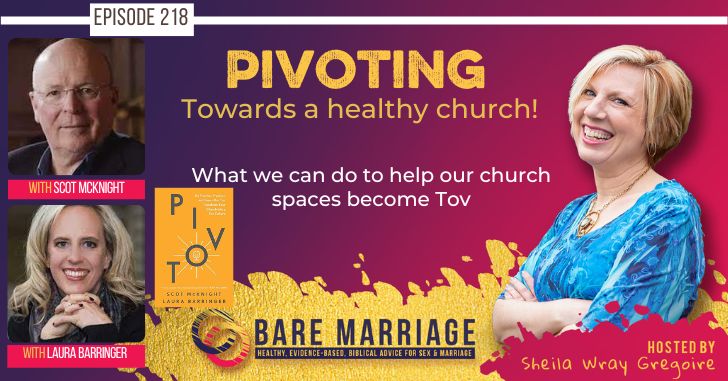


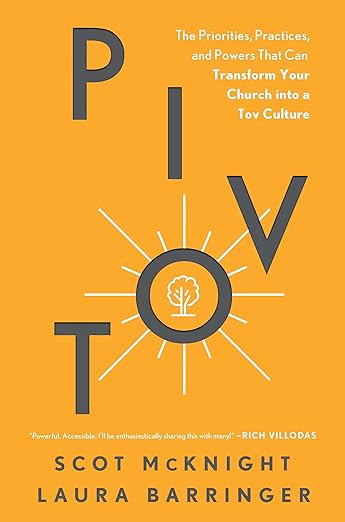
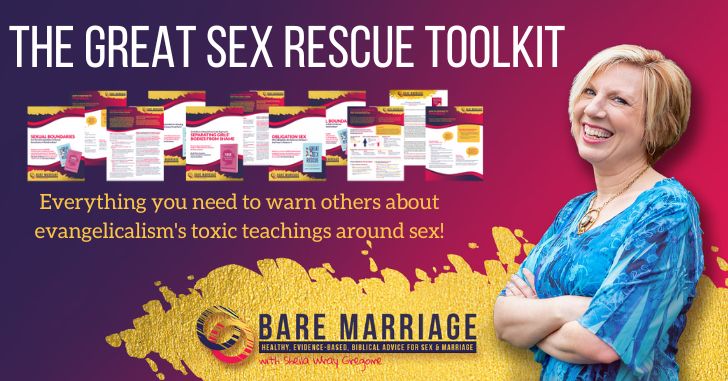


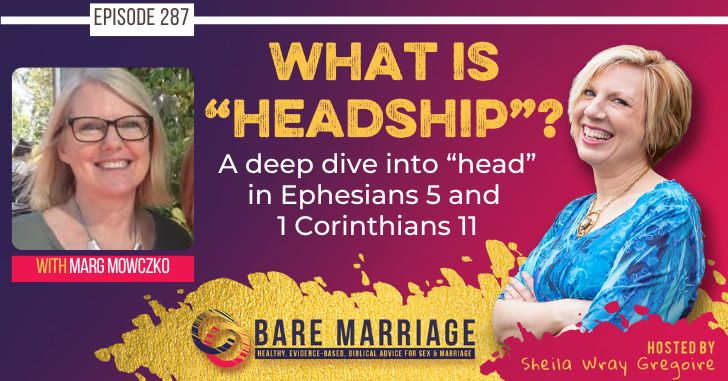


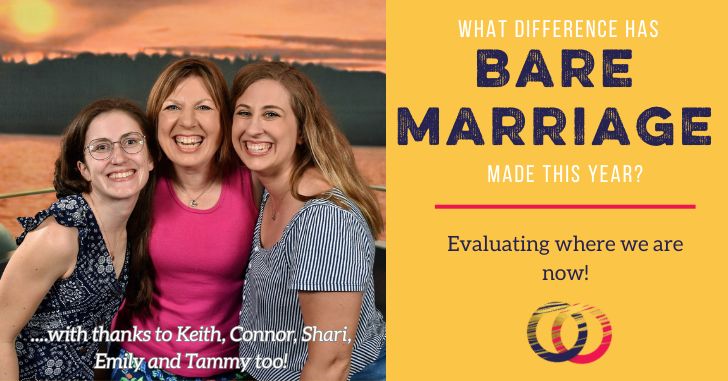


Interesting article and podcast. It’s a challenging discussion because the term “healthy” means many different things to many different people. What some consider unhealthy might be considered healthy by others. The same can be said for the term “toxic”.
It’s reality that there are many people who consider fundamental Bible believing denominations like Baptists to be healthy, otherwise Baptist churches would not exist. Some would call Baptists “unhealthy” but that would just be their opinion, since it’s obvious that millions of people consider their beliefs and practices “healthy”.
Yes, in the past I considered my former church healthy because the pastor kept saying it was. I t wasn’t until I read “”A Church Called Tov” that I realized how unhealthy it was.
“Healthy” … but what is the fruit of those places in people’s lives? “You will know them by their fruit…” and if we don’t see love, joy, peace, patience, kindness, goodness, faithfulness, gentleness, and self-control growing in those trees, then we know they are not healthy. There really are objective ways to assess these things!
There are many many women in self professed complementarian marriages that claim to enjoy those same fruits in their marriages.
Does that mean their marriages are “healthy”?
People can claim that they enjoy the fruits, but they likely don’t have an accurate picture of their own experience against other people’s. That’s why we do studies. One person is just one data point.
Thank you so much for sharing this podcast. The “image is everything” attitude must come to an end in Christian culture. It has hurt people in churches and in families. (I’m one of those that have been wounded by that.) Jesus wants us to have a genuine relationship with him and with fellow Christians. Then true healing can happen, and so can true repentance and revival.